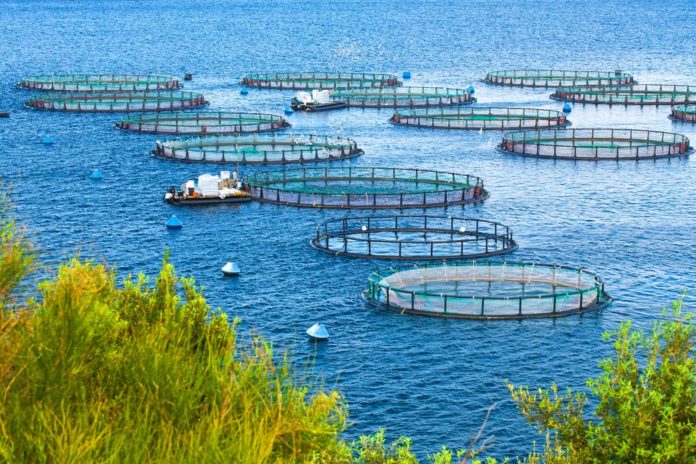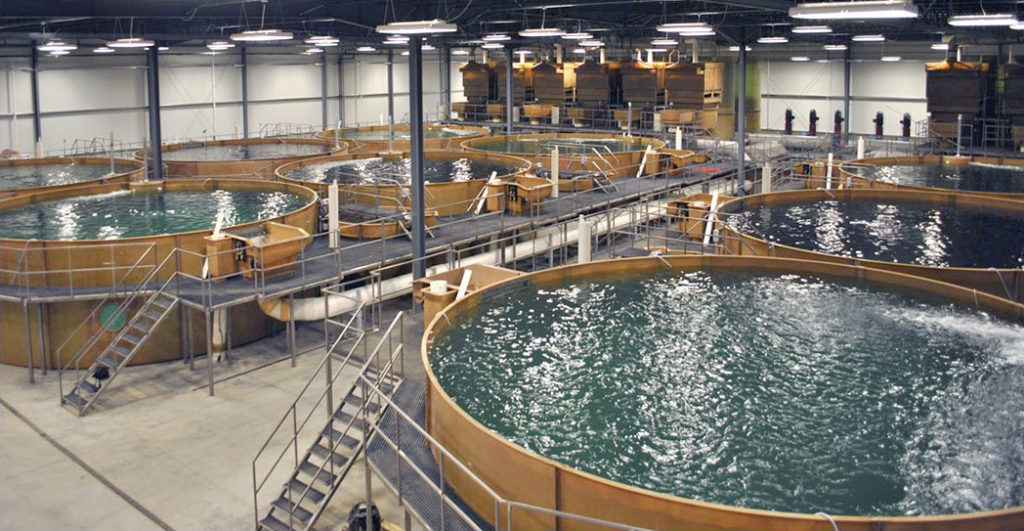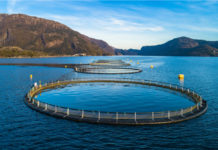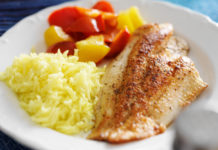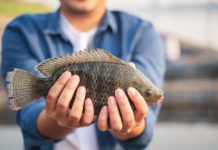Wild fish stocks are dwindling. The WWF estimates that 53% of the world’s fisheries are completely exploited, and the global fishing fleet is two-to-three times larger than the planet can handle. If we don’t cut back on fishing soon, all wild species we fish could collapse by the middle of the century. That means aquaculture is vital for meeting today’s demand for seafood, and most of the fish you find on supermarket shelves come from fish farms.
But how exactly is fish farmed? The following is a concise summary of four of the most common methods used in today’s aquaculture landscape.
Pond Systems
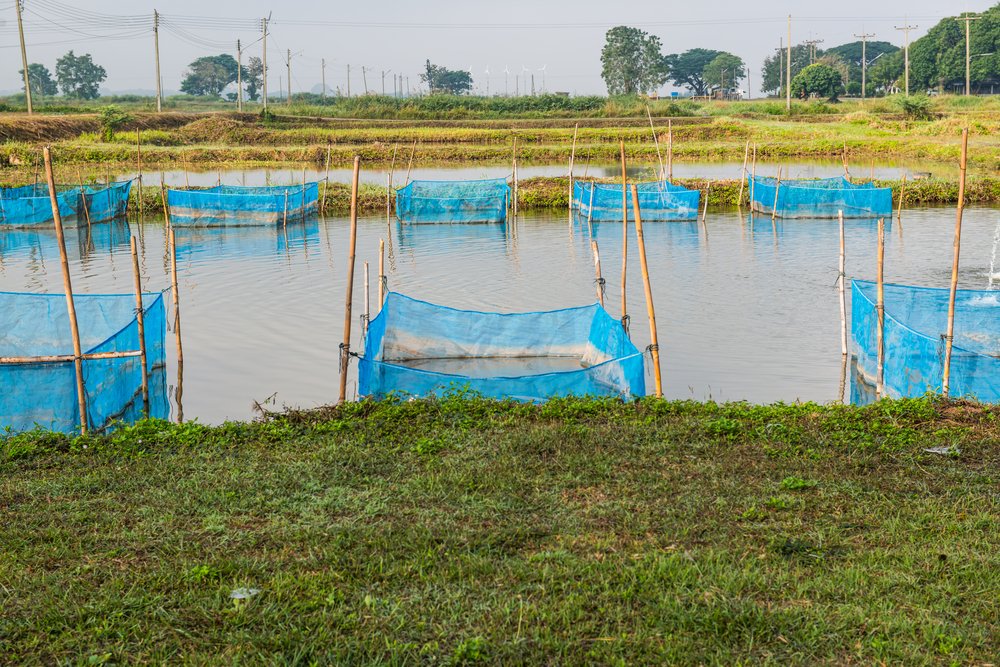
The oldest type of fish farming is the pond system, which originated thousands of years ago. Pond farms include earthen pond, ditch or canal systems, with clay-based soils that can easily be diked to make enclosures.
Of course, more sophisticated methods may be deployed on today’s industrial scale—but it’s worth noting that pond systems are often depended on in developing countries, where a shortage of wild fish could have serious nutritional consequences. The fact that they are self-contained and can be used for several different types of fish at once makes them an optimal choice for farmers.
When handled properly, ponds have a wealth of potential. Because they’re situated inland, or at least isolated from larger bodies of water, it’s relatively simple to send the waste water into side pools to be processed, or used as fertilizer. This significantly reduces the negative effects of pond enclosures on the natural environment.
Open Net Pens

If you’ve read stories about or seen pictures of fish farming, you’ve probably seen net pens. In their most common form, they involve a framework made from metal, wood or bamboo, which floats on the surface of a body of water and supports a mesh enclosure. They are either anchored to the bottom of the water body, attached to a secure structure nearby, or both.
Fish farmers favor net pens because of their flexibility, versatility and scale. They’re able to succeed in whichever type of water body best suits the needs of their stocks. They’re designed to allow water to flow freely through, which helps farmers deal with waste.
Reputable fish farms and processing plants have wastewater treatment facilities onsite to reduce pollutants. Wastewater can also be recycled in innovative ways: it makes great nutrient-rich irrigation for agriculture, and can also be used to nourish other farm stocks such as shellfish, which are filter feeders, or catfish, which are bottom feeders.
Companies that are certifiably sustainable don’t depend on chemicals or antibiotics to keep their stocks healthy, which helps conserve local ecosystems. Additionally, floating fish feeds stay within the enclosures.
Submersible Net Pens

An alternative to open net pens are submersible net pens. Instead of floating on the surface, these are fully underwater, and often take the form of a large, closed-off cage.
Since they’re beneath the surface, they’re also more remote than open pens. This shelters them from the elements, and makes it less likely that captive fish stocks will escape.
Recirculating Systems
Some types of fish farming show enormous promise for reducing environmental risk factors. One example is recirculating systems, which are essentially like high-tech pond systems. Fish stocks are reared in a series of interconnected, fully controlled tanks that are indoors and have virtually no chance of contact with wild stocks.
A closed circuit of pipes carries clean water to the tanks, while wastewater is pumped out of them, purified, and then recirculated. In the coming years, recirculating systems might become more common in the aquaculture industry.
Aquaculture: A Sustainable Future
There are still conservation challenges and concerns when it comes to aquaculture, and many environmentalists are worried about its ecological effects. While the issues they identify are valid, advances in fish farming technology are making it a safer and more sustainable means of supplying the growing global need for good-quality seafood.
Learn more about how Regal Springs produces sustainable Tilapia in open net pens.
Photo credits: Slavko Sereda / Shutterstock, Inc., KobchaiMa / Shutterstock, Inc., Slavko Sereda / Shutterstock, Inc., MidoSemsem / Shutterstock, Inc., Pranger


